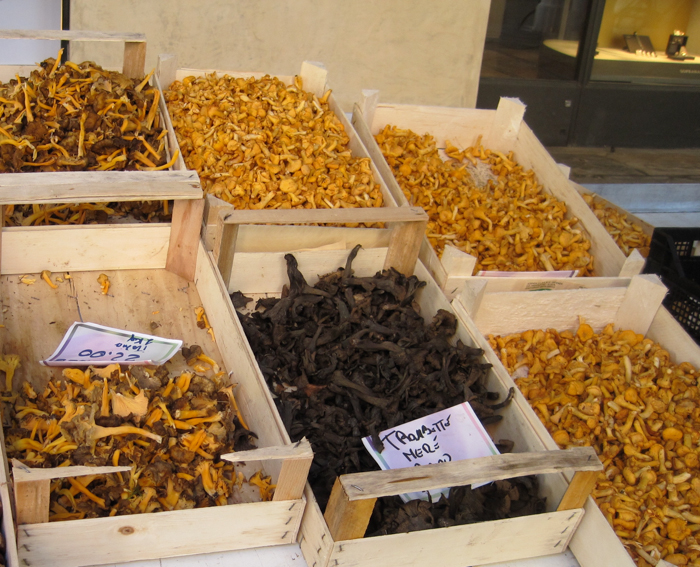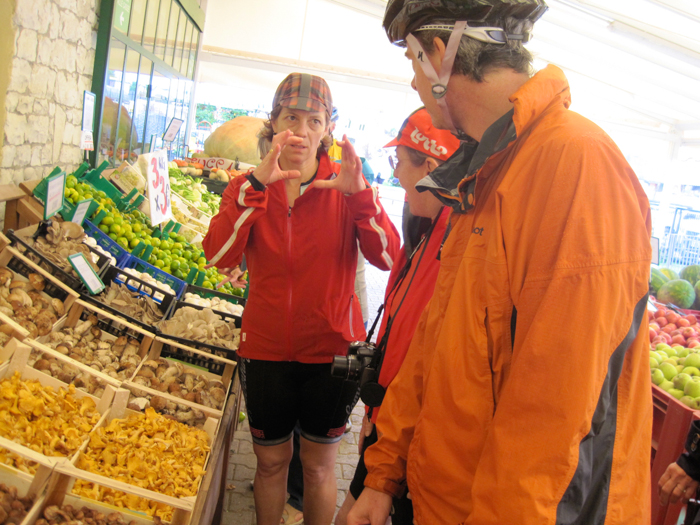Mushrooms are cultivated, found wild, and used in the cuisines of both Veneto and Trentino-Alto Adige. Wild mushrooms have been prized since ancient times; the Pharoahs of Egypt controlled their distribution, and they were referred to as “food of the gods” in ancient Rome. Due to the limited growing season of the wild varieties, their availability was limited until the French developed methods to cultivate them. In the late 1800s, entire families from Venice traveled to France to work in the mushroom farms in the caves near Paris, and learn these techniques. These families returned to Italy and began their own mushroom farms. These first farms were located in the caves around Costozza, as these possessed the optimum humidity and temperature for mushroom growth.

In the 1950s, the new American System for mushroom beds was introduced to these caves, which uses shelves placed over a substrate of compost, and provides a much higher quality product. Sterilized compost, consisting of wheat straw, herb straw, vegetal fibers and corn stocks, is laid out, covered with perforated plastic, and the mushroom spores are planted. The mushrooms are left entirely alone to incubate for one month. The mushroom bodies appear after a month or so, and are ready to harvest 8-10 days later. They are harvested by hand, packaged in wooden crates and shipped to markets.
Production in caves results in fewer mushrooms per foot than indoor cultivation of these mushrooms, but the cave environment yields a superior quality. The microclimate of the cave enables the production of a much more ‘natural’ mushroom, with a taste and smell more similar to it wild counterparts. Many grottos used for mushroom cultivation are located in the Berici Hills near Costozza, but also are found in the area of Cismon del Grappa and Sovizzo.

You will find caves used for cultivation in Trentino-Alto Adige, but the many woodlands are also a source of a huge variety of wild mushrooms. There are the well-known wild varieties that are found in both regions - chanterelles, honey mushrooms, morels, yellow trumpets, porcini and chiodini, but also many lesser-known: penny buns caps, pine mushrooms, parasols, russulas, Caesar’s agaric, and even 12 different species of Trentino black truffle, as well as black truffles from the Colli Berici.
In the late 1800s and early 1900’s, two residents of these regions devoted their academic lives to the study of the mushroom. A priest in the Trentino valley named Don Giacomo Bresadola drew, researched and cataloged thousands of different varieties over the course of his lifetime, many of them previously unknown. He published his findings in 1881 in Edible and Poisonous Mushrooms in Trentino, and then expanded his area of exploration and published Edible an Poisonous Mushrooms in Mid Europe. He was working on 26 volume illustrated compendium on mushrooms when he passed away in 1929. In the Veneto, a professor at Padua University, Saccardo, produced a 25 volume set, but was most famous for his Sylloge, a comprehensive list of all the names that had been used for mushrooms.
For some recipes using mushrooms inspired by our tours, visit my food blog: www.chefbikeski.com
Pizzoccheri con Asparagi e Funghi - Buckwheat Pasta with Mushrooms


